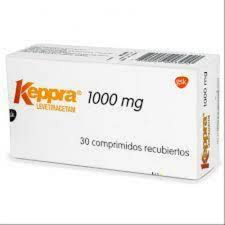Like many people, I have always been attracted by sparkling and colourful objects and growing up with a mother who was practically obsessed with jewllery, I learned a lot about the different precious stones and their mineral proterties.
Who knew this knowledge would come in handy one day while studying homeopathy?
How do you even make a remedy out of a hard stone like, say, emerald or diamond? The answer is: by water immersion.
Gemstone remedies are relatively new in homeopathy and therefore under used. Yet, they have been incredibly useful in my practice so far, especially in difficult chronic cases where serious emotional trauma was involved.
The keynote of all gemstones is a deep spiritual or religious component. Therefore the patients I have had who benefited from gemstones were all more attuned with the spiritual realm than average people: empaths, people practicing meditation and other spiritual practices, priests, people with clairvoyant abilities.
I think it’s time to discover these beutiful gems for their healing qualities, as well as admiring them for their beauty and rarity.
This is why I have organized a study course on gemstones.
The course includes:
-Unit 1: introduction to gemstones in homeopathy
-Unit 2: Rose Quartz and its uses
-Unit 3: Amethyst and its uses
-Unit 4: Emerald and its uses
-Unit 5: Ruby and its uses
-Unit 6: Diamond and its uses
-Unit 7: Lapislazuli and its uses
-Unit 8: Clear Quartz and its uses
-Unit 9: Shungite and its uses
-Unit 10: Black Opal and its uses
-Unit 11: Golden Topaz and its uses
-Unit 12 Pearl and its uses
-Unit 13 Sapphire and its uses
If you are already a student of homeopathy, this course can open your practice to new remedies and expand your range.
The cost of the whole course is £100 or $150: you will receive nine separate units in Word document.
If you wish to have online one-to-one tuition as well as the text, the cost is £200or $250.
Here is a sample of what you will get:
From the beginning of time, gemstones have been appreciated, coveted, desired. Yet, they have no practical purpose and it was only in recent times that stones like diamonds, rubies and pearls have been employed in industry for purposes other than their beauty.
Gemstones figure in all religious rituals and rituals of power. Therefore religion and power are some of the big themes in gemstone remedies.
In homeopathy, most remedies are made from plants, animal or mineral sources. Of course there are sarcodes and nosodes and the so called impoderable, but let’s keep things simple for now.
“Plant patients” typically talk about feelings. Supposed your patient has had a burglary and many items were stolen from the house. This patient will talk about how he/she feels about the event. How this is affecting him/her emotionally, the sentimental value of the object stolen and so on.
The “mineral patient” would make a list of the stolen goods, will talk about the mess the house was in, everything was out of place. He/she feels like the “rug has been pulled from under my feet”, they talk about “support” or lack of support.
The “animal patient” will talk in terms of survival and attack: how he/she could have been killed or perhaps would have killed the burglar if he/she could. He/she would talk about “invasion of space”, someone intruding into “my territory”, my den and so on.
Belgian homeopath Anne Vervacke says that you can recognise a gem remedy patient because they have the qualities of two kingodms: they are both vegetable and mineral or both mineral and animal, they are a combination. This would be the first clue.
When we think about key themes for any remedy, we need to go back to the source and see what its main qualities are.
Contact me for more details!
For more info on course, click here.
5G ADHD alternative medicine; asthma; autism autism; autoimmune black opal; boys candida; chemical exposure corona virus corona virus; depression detox diabesity diabesity; diabetes
diabetes; diet eczema; flu; gemstone remedies; gemstones; glasgow glyphosate gut-brain connection hashimoto; holistic homeopathy homeopathy;
hypothyroidism; IBS immune system leaky gut lockdown multiple chemical sensitivities nutrition potty training puberty skin issues; sleep supplements thyroid; tinnitus



No spam, notifications only about helpful homeopathy tips, homeopathy courses and new products!
The health benefits of Vagus Nerve Stimulation Vagus nerve stimulation (VNS) can offer several benefits, particularly for conditions like epilepsy, depression, and stroke recovery. It

HOMOTOXICOLOGY IS THE EVOLUTION OF HOMEOPATHY Homotoxicology is the study of what toxins do to the human body. This discipline was invented by Dr. Reckeweg

WHAT IS HOMOTOXICOLOGY AND HOW DOES IT WORK? Homotoxicology is the branch of medicine that seeks to identify the toxins in the body, then aid

IS HOMEOPATHY EQUALLY EFFECTIVE WHILE ON MEDICATION? A CASE OF EPILEPSY This is a bone of contention among homeopaths: I know some homeopaths who will